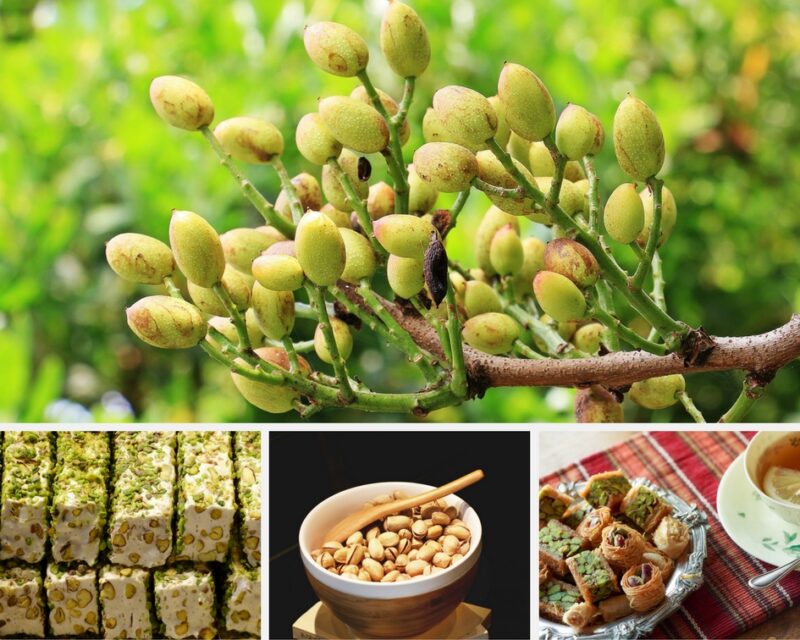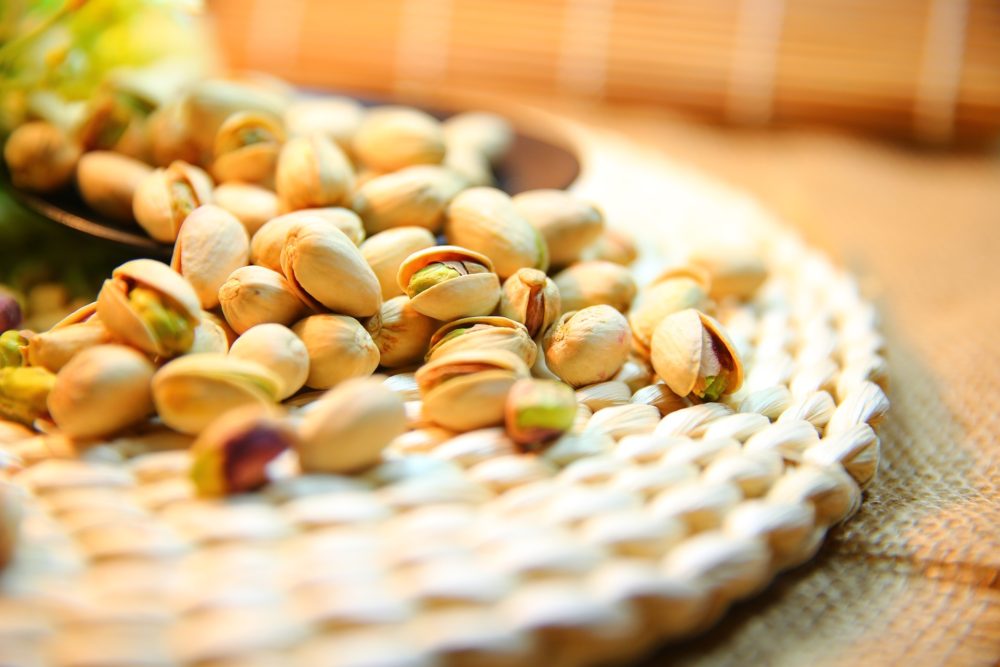If you’ve had a chance to wander around Aegina and take part in its annual festival (the famous fistiki-fest, which takes place around September 20 each year), you’re sure to have tasted its pistachio. After all, it’s the island’s star product.
This pistachio enjoys a reputation for excellence, having obtained an appellation d’origine contrôlée since 1994. However, this prestige comes with a downside: it is also one of the most expensive varieties.
Greece is the world’s sixth-largest producer of this green nugget, with 9,000 tonnes a year.
Pistachios through the ages
The pistachio tree has existed since the end of the Stone Age, around 7,000 BC. It is native to Central Asia, particularly the desert regions of this area. These regions benefit from a long, hot summer, which helps ripen the fruit, and an annual cold period, which induces flowering.
The Romans introduced it to Europe in the first century AD. The name “Pistache” first appeared in the 13th century. It comes from the Latin “pistacium,” which borrowed it from the Greek “pistakios,” which in turn borrowed it from the Persian “pistah,” meaning “nut”.
Early cultivation of pistachios on the island of Aegina dates back to the late 19th century when a few daring Eginiotes abandoned their traditional crops to plant pistachio trees. In the 1950s-1960s, farmers faced the devastation of their vineyards by phylloxera. As a solution, they uprooted a large proportion of their vines and replaced them with pistachio trees. Recognizing the importance of this crop, a special branch of the agricultural cooperative was created for pistachio trees in 1975.
Today, the tree is grown in just 18 countries. The main ones being Iran, the USA (mainly California), Syria, Turkey, China, Greece, Afghanistan, Italy, Uzbekistan and Tunisia.
The pistachio harvest
Pistachio trees are dioecious, meaning male and female flowers are found on separate plants. The yellow and pink bunches on the trees reach maturity at the end of August. At this point, it’s time to shake the branches to harvest the fruit, which falls onto tarpaulins below.
Harvesting takes place in late summer or early autumn, when the shells that cover the nuts open and detach from the pistachio, which takes on a reddish color. The pistachios are mechanically sorted, dipped in a mixture of salt and lemon (one cup of juice + one cup of salt for 15 kg). Then dried and often roasted before being packed.

Choosing the right pistachios
Pistachio flesh should ideally exhibit a fresh green color, indicating that the pistachios have not been roasted at too high a temperature, which could impair their flavor. They are available in various forms: raw, cooked, plain, or salted, and can be sold shelled or unshelled. Pistachios are consumed as a snack or incorporated into culinary dishes such as tajines, salads, poultry or vegetable fillings, cold meats, sauces, ice creams, and pastries like the famous baklava.
The bifacts about pistachios
Similar to many shelled fruits (such as almonds) and oilseeds (like pecans and walnuts), pistachios are rich in protein (26%) and unsaturated fatty acids, primarily monounsaturated, which contribute to lowering ‘bad’ cholesterol levels. They also possess protective effects against cardiovascular disease, diabetes, hypertension, and cognitive decline. Additionally, pistachios contain a variety of vitamins, minerals, fiber, phytosterols, and antioxidants such as anthocyanins, vitamin E, lutein, zeaxanthin, and resveratrol. These antioxidants are renowned for their numerous positive health properties, including anti-free radical, anti-cancer, and anti-inflammatory effects.
Pistachios also contain a lot of copper, necessary for the formation of hemoglobin and collagen in the body, as well as for the body’s defense against free radicals. It also provides a good quantity of vitamin B6 and iron. Pistachios therefore contribute to the proper functioning of the immune system. It is also a source of vitamin B1, necessary for the production of energy and phosphorus, essential for bones and teeth.
The Pistachios contain manganese, which facilitates a dozen different metabolic processes. And also, Vitamin K, necessary for the production of proteins involved in blood coagulation. But that’s not all! They are also rich in magnesium, potassium, and zinc. Additionally, their high dietary fiber content helps prevent constipation and reduces the risk of colon cancer.
Finally, thanks to all its active compounds, pistachios can contribute to good health.
Consume in moderation to avoid weight problems
This article was written by Dina Sintzanaki-Déprés
Has this article inspired you to visit Aegina?
Read all our articles on Aegina, an island close to Athens.




